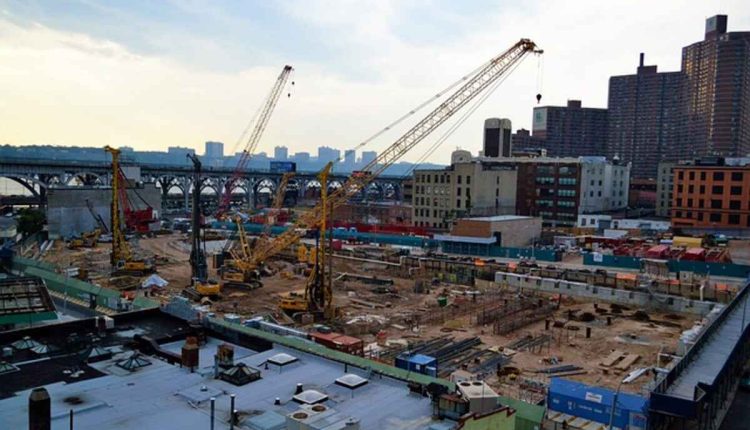When it comes to renovation projects, selective demolition offers a cost-effective and eco-friendly option to complete deconstruction. Furthermore, selective demolition helps preserve historically or architecturally significant features of buildings during its process. The best guide to finding Main Street Demolition Oxnard.
Before removing building components, specialists ensure their removal is carried out safely by switching off power and capping pipes, as well as installing protective shoring or bracing to avoid movement, settlement, or collapses.
Less Waste
Selective demolition, deconstruction, and implosion offer more sustainable options than traditional demolition methods by minimizing waste generation while protecting precious resources. While conventional methods often lead to unnecessary destruction of materials and parts of buildings, selective methods allow targeted components to be salvaged for reuse or recycling purposes.
Sustainability in selective demolition requires careful planning and an experienced team of technicians. This process includes evaluating the structure, identifying salvageable or recycled materials, and devising an appropriate plan for dismantling. Furthermore, specialized equipment must be utilized to minimize impacts on load-bearing structures and critical components, with utility companies often being called upon either prior to work beginning or once the project is complete.
Selective demolition provides the flexibility needed for building renovations without disrupting operations. It saves costs while conserving natural resources and contributing to a more eco-friendly society. As such, selective demolition is a perfect option for developers and contractors committed to sustainability.
Less Disruption
Selective demolition offers a more efficient renovation process because only parts of a building that are being renovated need to be removed; other parts will remain undisturbed and undamaged compared to traditional methods that frequently cause damage during their demolition stages. This method also saves on costs compared to tearing down entire structures at once, thus saving time and effort as well as expenses compared to traditional methods that often cause more extensive destruction during their destruction phase.
Selective demolition allows you to save historically or architecturally significant elements of a building, which is especially helpful when renovating projects must incorporate historical or distinctive elements into their final designs.
Selective demolition is more eco-friendly than conventional methods by eliminating waste. By recycling some of the materials that would otherwise go to landfills – like concrete and steel – selective demolition reduces energy consumption by using only what equipment is necessary for each task while eliminating excess equipment usage.
Before beginning selective demolition, it is imperative to disconnect and cap all utility lines to reduce any potential for harm to other occupied portions of the building and protect from contamination. Furthermore, temporary weather protection should be provided to areas not subject to demolition, such as doors and windows, as this will safeguard substrates that become exposed during this process from water leakage, wind gusts, debris, etc.
Less Risk
As noted, selective demolition works well when the structure remains structurally sound and helps preserve historical or valuable features or elements, making it a key tool in renovation projects. Furthermore, selective demolition can also help upgrade existing systems for energy efficiency or update designs by selectively demolishing certain parts of them.
There may be instances when complete building demolition is necessary to allow for new construction. An entirely new building could provide enhanced functionality or aesthetics, thus increasing the value of your property overall.
Beginning the demolition process requires conducting an in-depth assessment of a building. By gathering this information, our team can identify components or areas that need to be removed and determine how their removal will impact its structural integrity. Then, using this knowledge, we can develop a detailed plan for their demolition.
Reduce disruptions while mitigating risk. Work with professional teams who specialize in selective demolition to ensure all necessary precautions are taken, including having written verification from an industrial hygienist that the site is free from asbestos, lead, and mold; additionally, hiring plumbing and electrical experts to safely shut off and cap off utilities before starting demolition is vitally important.
Less Hazardous Waste
Selective demolition involves contractors carefully taking only what is necessary so nearby structures and residents can carry on with their daily activities unimpeded by noise, dust, or vibration. With less noise, dust, and vibration associated with traditional demolition methods, selective demolition causes less disruption for surrounding buildings and residents – especially useful in urban settings where space can be limited, and buildings often share close quarters.
Through systematic disassembly, demolition crews identify and separate salvageable materials for reuse or recycling, greatly reducing waste and aligning with eco-friendly construction practices.
Selective demolition provides the unique ability to preserve historically significant or architecturally significant features of a structure, which can be especially crucial in renovation and adaptive reuse projects where maintaining the original elements of the building is vital to its history or culture. Furthermore, selective demolition allows precise structural modifications without altering its integrity – an advantage over more drastic forms of destruction like complete demolition.
Selective demolition not only minimizes its environmental impact but can save both time and money over the long term. By taking an optimized approach, demolition crews can work faster and more efficiently to save clients on labor and equipment costs; furthermore, being able to repurpose components of structures helps cut costs by eliminating material purchases – making selective demolition an attractive cost-saving alternative for numerous construction and renovation projects.


